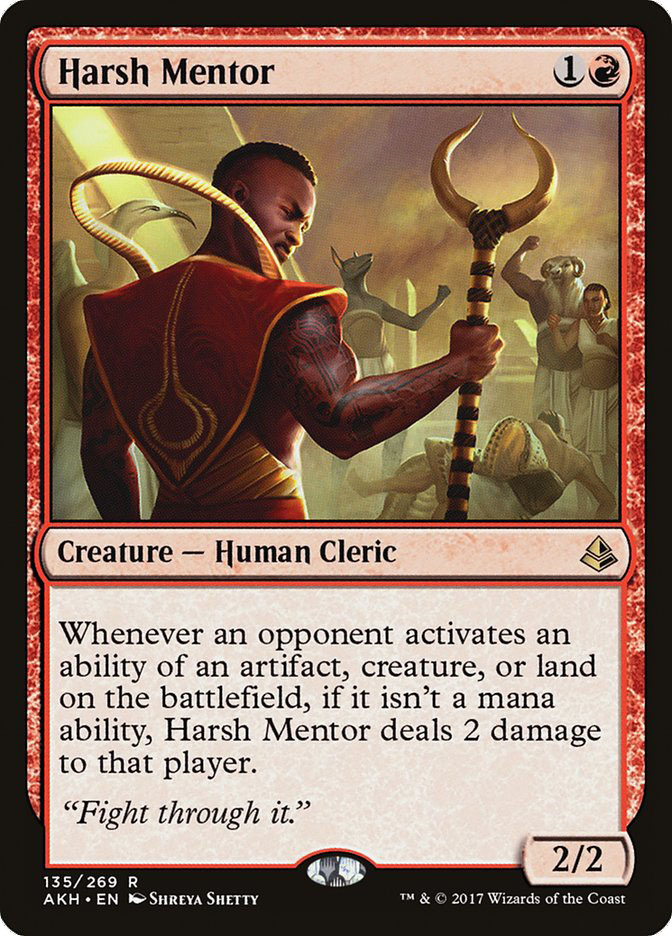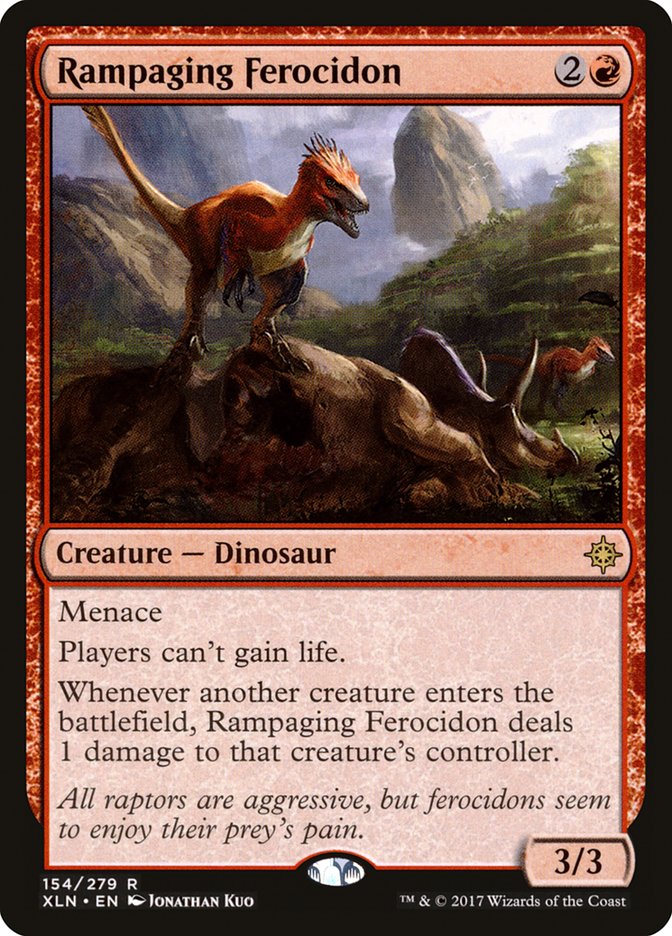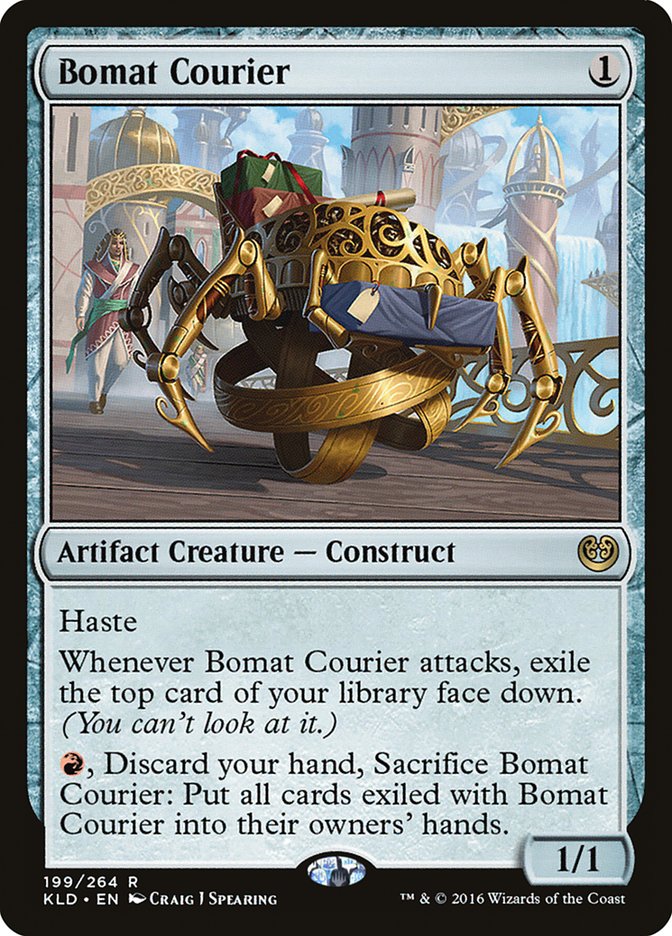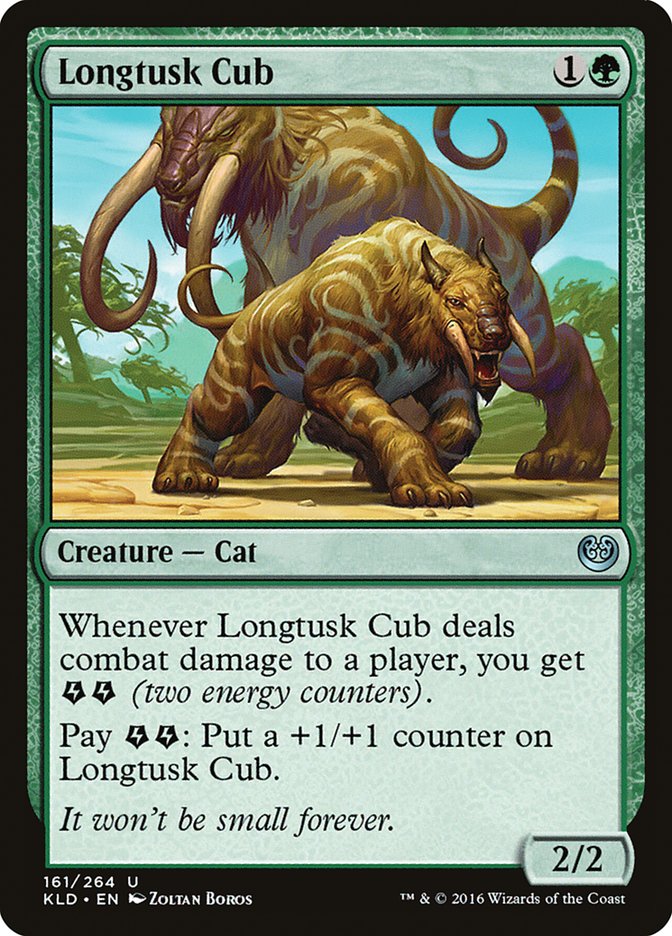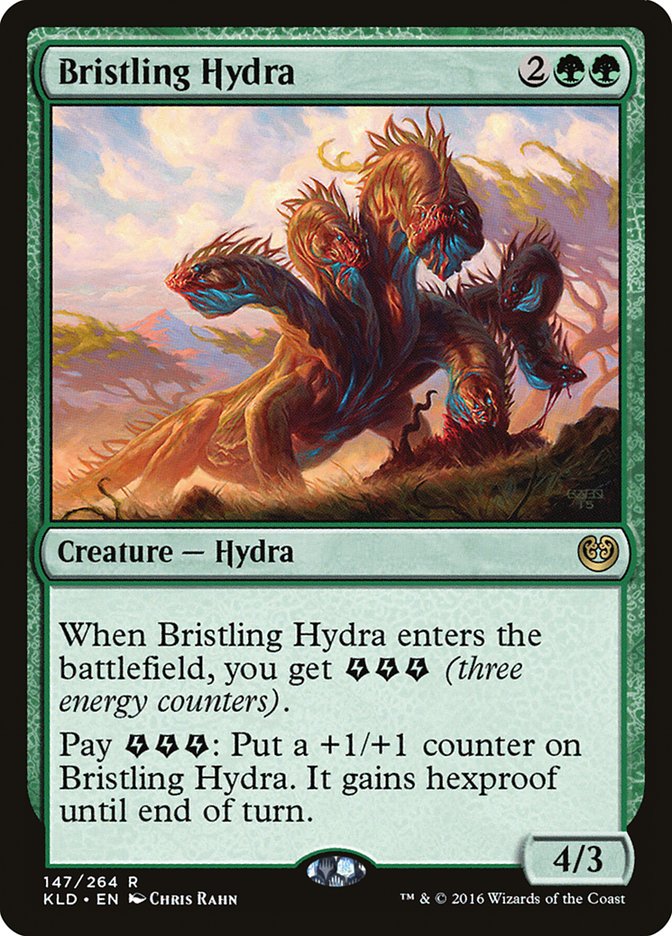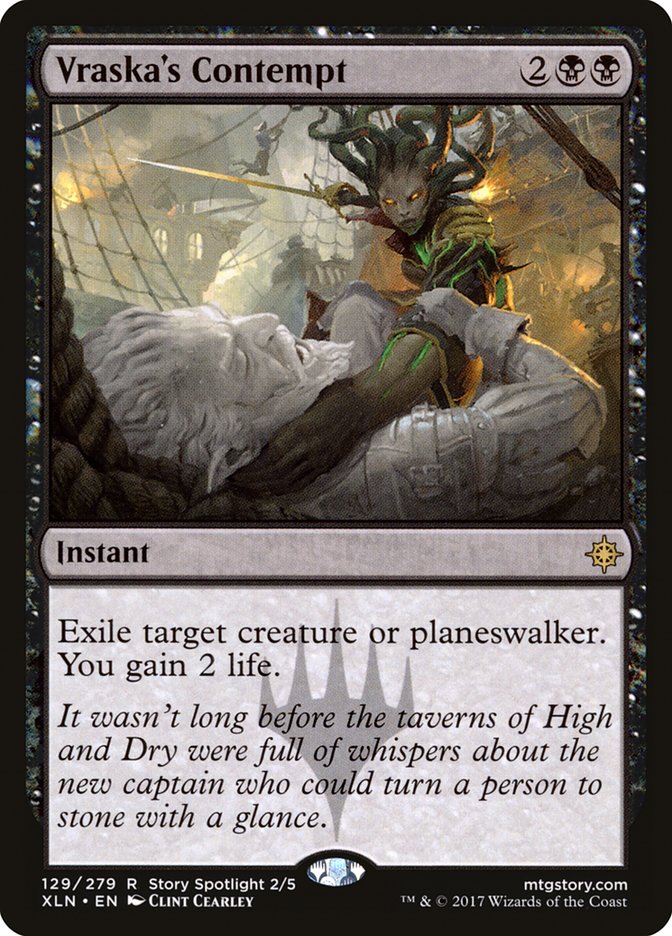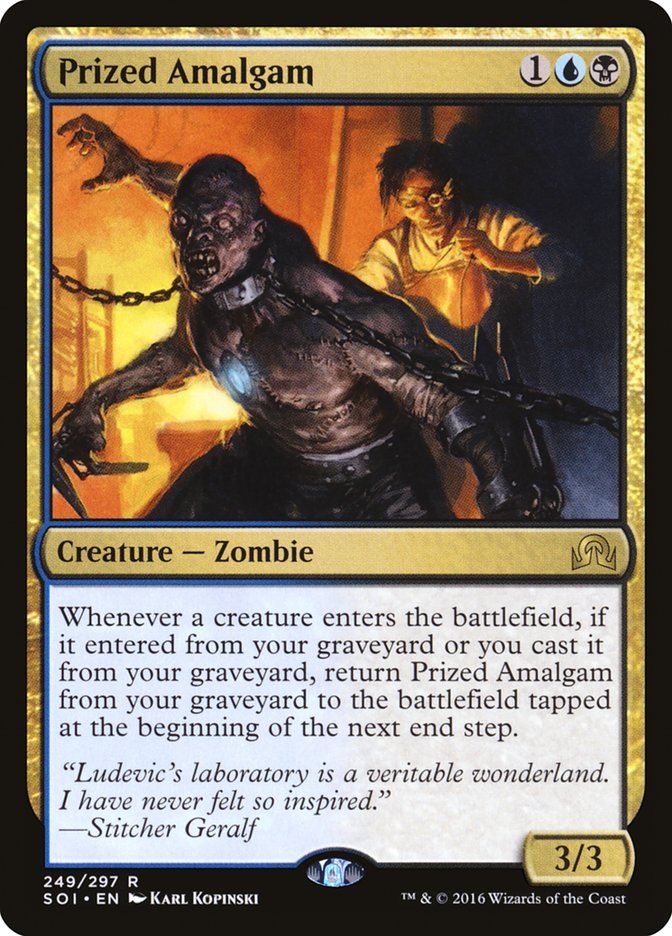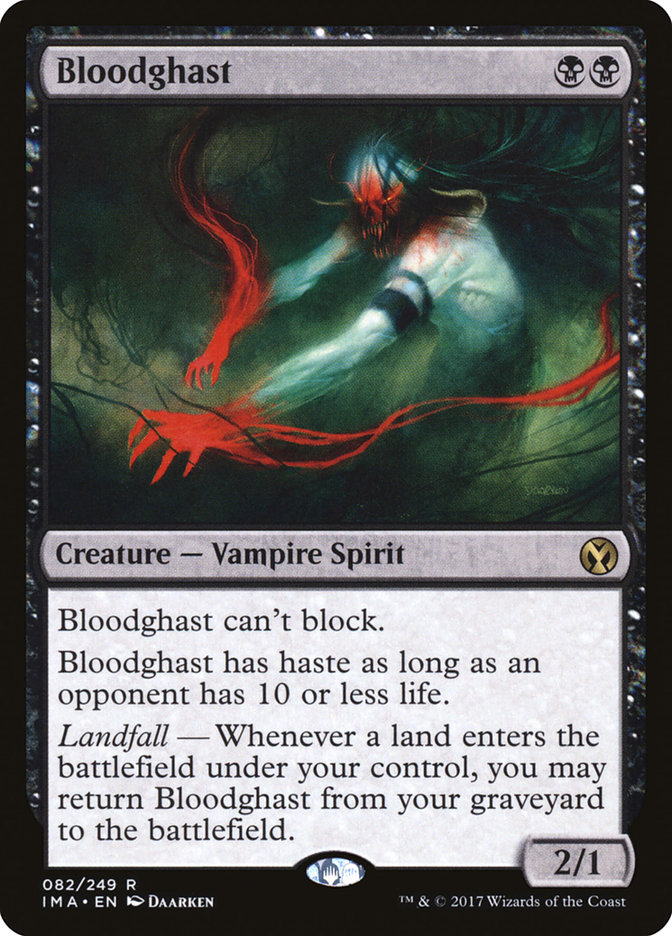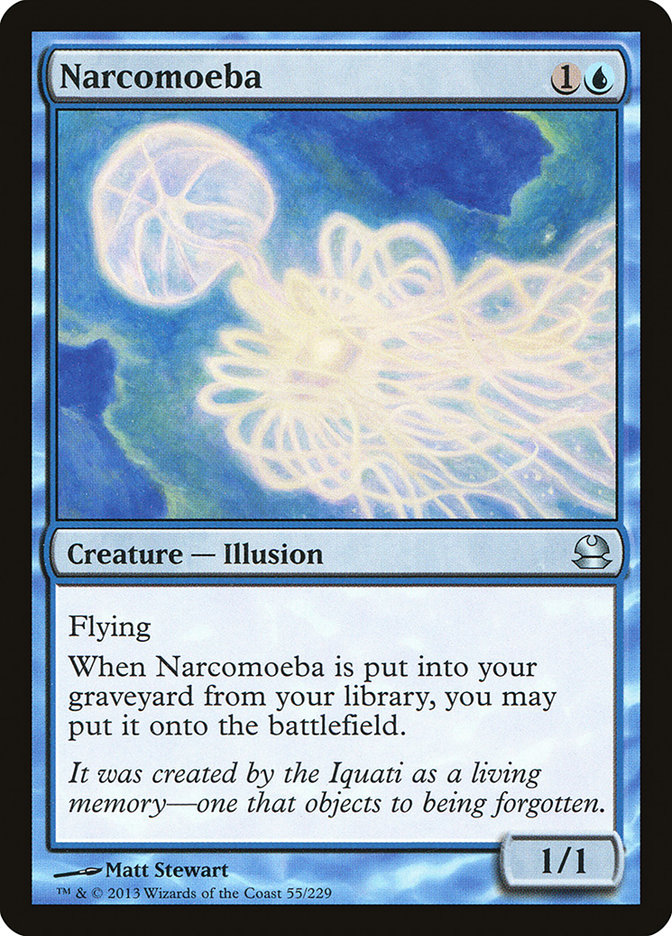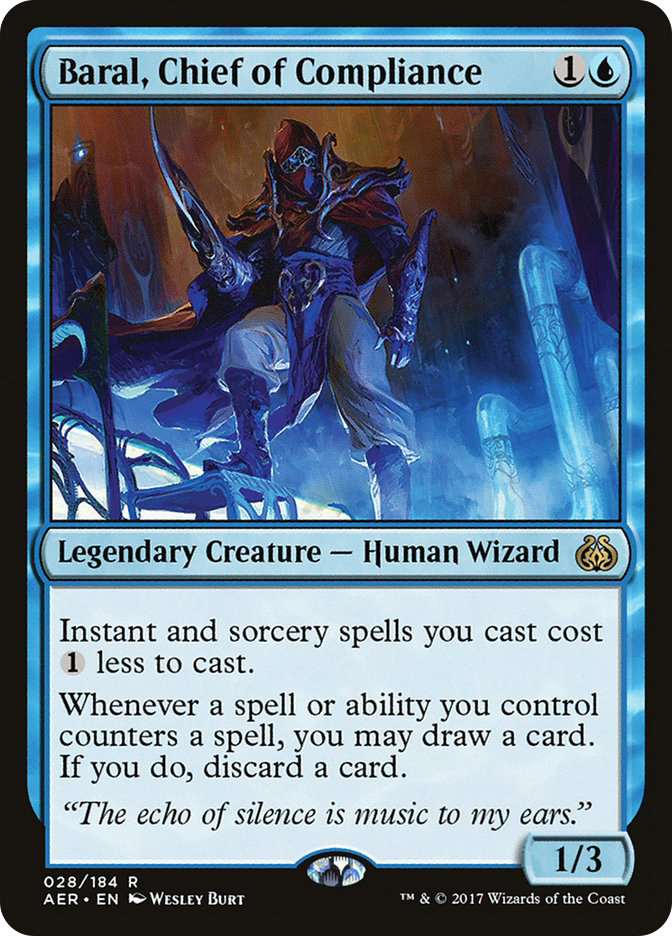The StarCityGames.com Season Two Invitational is coming up this weekend! It is very important to stay ahead of the curve and be prepared for both formats of the Invitational.
Here are the five things that you need to know going into the Invitational this weekend.
1. Know How to Play Against Ramunap Red
It’s no secret that Temur Energy has been dominating Standard ever since Aetherworks Marvel was banned in Standard. It is also pretty common knowledge that Temur Energy is favored against the other powerhouse of the format: Ramunap Red. So why has Ramunap Red continued to have so much success in the format despite being disfavored against the deck that is everywhere?
Creatures (24)
- 4 Bomat Courier
- 3 Kari Zev, Skyship Raider
- 4 Hazoret the Fervent
- 1 Ahn-Crop Crasher
- 4 Soul-Scar Mage
- 4 Earthshaker Khenra
- 4 Rampaging Ferocidon
Planeswalkers (2)
Lands (9)
Spells (25)
- 15 Mountain
- 4 Shock
- 4 Lightning Strike
- 2 Abrade

I think it has something to do with a lot of Temur Energy players making some common key mistakes when playing against the Ramunap Red deck, allowing these Red decks to win games they arguably shouldn’t be winning.
Temur players have been playing too scared. As soon as their opponent plays a Mountain and a one-drop creature, many Temur players immediately feel like they are on the back foot and make many decisions in order to preserve their life total in the short term. They do things like fire off their removal spell at the first opportunity, killing whatever creature that happens to have been deployed by their opponent. They have also been holding too many creatures back to block when it is much better in many spots to put pressure on your Red opponent and close out the game that way.
Prioritize your removal spells! Although it may be tempting to use your removal at the earliest opportunity, it is important to know that the Ramunap Red player has access to many creatures that can make life very difficult for a Temur Energy player. By killing their Kari Zev, Skyship Raider on Turn 2 with your only removal spell, you’re setting yourself up for disaster by allowing them to deploy a Rampaging Ferocidon or Harsh Mentor the next turn, making the Whirler Virtuoso you’re leaning on to buy you time much worse.
In general, I think it’s much better to use the early turns of the game against Ramunap Red to deploy your own threats and try to block their early creatures instead of using your removal on-curve. This allows you to be more selective in using your removal. You will get a lot more mileage out of your removal spells if you save them for the heavy-hitting creatures instead of killing things as quickly as possible.
When Bomat Courier was first printed, the players I knew that picked this card up early quickly identified that people weren’t respecting it enough. They would let it get in chip damage and draw their opponents five or six cards, all because they didn’t want to waste a removal spell on a 1/1. I think many players now are falling into this same trap and not giving this card enough respect. Each card exiled under a Bomat Courier is closer to a card drawn than many players realize, so I think it is very important to kill the Bomat Courier before your opponent has the ability to empty their hand and use Bomat Courier’s ability. I would add Bomat to the list of high-priority targets in Ramunap Red, alongside Harsh Mentor and Rampaging Ferocidon.
The last, but maybe most important, common mistake that I see players making against Ramunap Red is that they don’t identify early enough that they are the beatdown. If a Temur Energy player is on the play against a Red player, I think the Temur player is actually the aggressor more often than not.
Temur has access to a lot of cards that the Ramunap Red player will have a hard time answering. Longtusk Cub and Bristling Hydra can be very hard to get off the battlefield with enough energy. Attacking with your Longtusk Cub on Turn 3 can quickly snowball out of control and put the Red player in a position where they have to start blocking. The Red deck has a very hard time playing from behind, so if you ever find a way to position the game where they have to defend, you’ll be much better off.
2. Vraska’s Contempt Is Well-Positioned
It’s unclear to me exactly what shell it is best to put this card in, but I’ve been highly impressed with Vraska’s Contempt in Standard lately. Standard has recently been defined by a wide variety of threats that have proven difficult to answer with traditional removal.
Particularly against Energy variants, it is hard to make your answers line up well with their threats. Sometimes I find myself holding up an Essence Scatter in the mirror, only to be met by a Vraska, Relic Seeker. Or I’ll have a Harnessed Lighting but my opponent will slam The Scarab God, which I won’t be able to remove for long.
This is a key indicator to me that it is better to be playing these threats and requiring your opponent to have the right answer in these spots, but we aren’t always lucky enough to be in that position. You need to be able to play from behind as well. That’s why Vraska’s Contempt has been so impressive to me, because it’s a clean answer to so many questions your opponent can ask of you.
There have been a few decks in Standard that are utilizing Vraska’s Contempt well. Christoffer Larsen made Top 8 of Grand Prix Portland with his take on Four-Color Energy.
Creatures (22)
- 3 Gonti, Lord of Luxury
- 4 Whirler Virtuoso
- 4 Servant of the Conduit
- 4 Glint-Sleeve Siphoner
- 4 Rogue Refiner
- 3 The Scarab God
Planeswalkers (2)
Lands (18)
Spells (18)

His deck goes beyond the traditional black splash in Temur Energy and actually makes black one of the main colors. This allows him to support cards like Gonti, Lord of Luxury and Vraska’s Contempt. The deck is better-suited in grindy midrange mirrors, something that we’re seeing a lot more of now in Standard.
I also ran up against a similar, but slightly more interesting, build two weeks ago at the Team Open in the hands of Brennan DeCandio.
Creatures (19)
- 3 Whirler Virtuoso
- 4 Glint-Sleeve Siphoner
- 1 Gifted Aetherborn
- 4 Glorybringer
- 1 Vizier of Many Faces
- 2 The Scarab God
- 2 Champion of Wits
- 2 Hostage Taker
Planeswalkers (3)
Lands (23)
Spells (15)

Brennan opted to take the green out entirely in favor of a cleaner manabase. He loses out on Rogue Refiner and Attune with Aether but still has access to many of the grindier cards that draw me towards the Four-Color Energy decks.
3. Play What You Know in Modern
If you have a deck that you are comfortable with in Modern, you should stick with playing that deck at the Invitational this weekend.
Just take a look at the most successful Modern players right now. The players who had the most success in Modern in Baltimore were those who stuck to playing what they were most experienced with.
Creatures (16)
Lands (18)
Spells (26)

My good friend Dylan Donegan took down SCG Baltimore playing the Modern deck that he’s been championing for almost a year now, Grixis Death’s Shadow. The metagame has looked a little hostile to Grixis Death’s Shadow recently, as it definitely isn’t as dominant as it once was, but that didn’t stop Dylan from crushing the competition with it. He plays the deck as well as anyone, and it definitely showed in Baltimore.
Creatures (29)
- 1 Azusa, Lost but Seeking
- 4 Birds of Paradise
- 1 Eternal Witness
- 2 Aven Mindcensor
- 4 Noble Hierarch
- 4 Knight of the Reliquary
- 1 Scavenging Ooze
- 4 Voice of Resurgence
- 4 Courser of Kruphix
- 2 Tireless Tracker
- 2 Ramunap Excavator
Lands (16)
Spells (15)

I don’t personally think G/W Company is the best deck in Modern, but I was very happy that my teammate Todd Stevens decided to play it at this event. He knows the deck very well, and he knows the role he needs to take in every matchup.
There are two main reasons why I believe it’s better to stick to playing a deck you know.
First, you’ll be better at making decisions with your deck. I don’t know how many times I can preach that I believe the most important decision to be made in Modern is your mulligan. All of the decks in Modern have an incredibly powerful gameplan, so giving yourself the best ability to enact this game plan is your best shot at having success in Modern.
If you decide to pick up a new deck in Modern, you will look at a lot of hands that are close, but you won’t have the experience to fall back on in order to determine whether or not a hand like that can “get there.” With experience you will start to have a feel for how each of these hands plays out most of the time, and that is an excellent resource to have going into a high-level Modern event.
Second, Modern is too diverse to gain a significant metagame edge. Even if you find a deck that has excellent matchups against the eight most popular decks in Modern, it’s important to note that those eight decks only make up about 45% of the Modern metagame. You’re more likely than not to play against something other than those eight decks.
This is why proactivity is what rules Modern. You never really know exactly what you’re going to go up against, so it is very important that the deck you decide to play has its own strong, proactive gameplan.
4. Dredge Is Due for a Resurgence
Dredge used to be such a huge player in Modern, even after the banning of Golgari Grave-Troll, that we would see things like maindeck Relic of Progenitus in archetypes such as Eldrazi and Taxes, Scapeshift, and Skred Red. Dredge started to die down in popularity because it was hated out so much. But now that people don’t see as much Dredge these days, they’ve stopped putting this hate in their decks. I think that Dredge is positioned well to come back with a vengeance this weekend, and I expect many savvy players to be running it.
We’ve already seen Dredge have success recently on Magic Online, and it had an excellent weekend during the RPTQs. Despite this, it still seems to be flying under the radar a bit. Don’t be caught unaware at the Invitational! I’m very confident I will find space in my sideboard for a Grafdigger’s Cage or two.
5. Keep up with the Current Modern Metagame.
It’s important to play what you know in Modern, but it’s also just as important to keep your deck up to date with the current Modern landscape in mind.
The recent popularity of Humans in Modern has caused an interesting metagame shift. Jeskai Control has risen to the top mostly due to how well it preys on the Humans deck. Jeskai has a full suite of cheap spot removal spells to stop the early aggression of Humans while being very well set up against the way the Humans deck is trying to interact. There are too many different removal spells for Meddling Mage to ever be effective at locking out a card, and it’s almost impossible to count on your Kitesail Freebooters surviving.
Humans has also had an impact on the popularity of Storm and Eldrazi Tron, two decks that have a hard time against Humans. This has further helped out Jeskai Control because Eldrazi Tron was the deck that gave them the most trouble.
The previous boogeyman of the format, Affinity, took a hit after the rise of Jeskai Control. Jeskai preys on any deck that is trying to beat down with creatures, and Electrolize in particular does an excellent job of taking out Affinity’s one-toughness creatures.
Use this knowledge of the metagame to adjust your sideboard to combat what you expect to see. I’ve been making a few changes to my list, and this is what I’ve settled on for the moment.
Creatures (37)
- 4 Meddling Mage
- 4 Noble Hierarch
- 4 Champion of the Parish
- 4 Mayor of Avabruck
- 4 Thalia, Guardian of Thraben
- 4 Mantis Rider
- 3 Reflector Mage
- 4 Thalia's Lieutenant
- 2 Thalia, Heretic Cathar
- 4 Kitesail Freebooter
Lands (18)
Spells (5)

I’m trying out Ben Feingersh’s manabase because I really like having access to four Horizon Canopy. I’m a little concerned about being able to cast Mantis Rider with consistency, however, because sometimes you can be stuck on multiple G/W lands, though it doesn’t come up too often.
I ended up cutting all of the Dark Confidants from my previous list because they don’t play out very well against the matchup I want them most in: Jeskai Control. I really wanted something that would get me value there, and Dark Confidant too often died to their many removal spells. I replaced that slot with Sin Collector as a way to get a card out of their hand and have a body to pressure them, which is much better in that matchup than a Kitesail Freebooter that will die later regardless.
I also switched out Fiend Hunters for a Hostage Taker. I’ve been really impressed with the Hostage Taker, as later in the game you can often use Aether Vial to put in your Hostage Taker and immediately cast whatever you’ve taken hostage. This is very powerful against cards like Tarmogoyf, Reality Smasher, and Thought-Knot Seer.
***
I hope this helped you in your preparation for the Invitational this weekend. Invitationals are the tournaments that I look forward to most each year, and this weekend is no exception.


